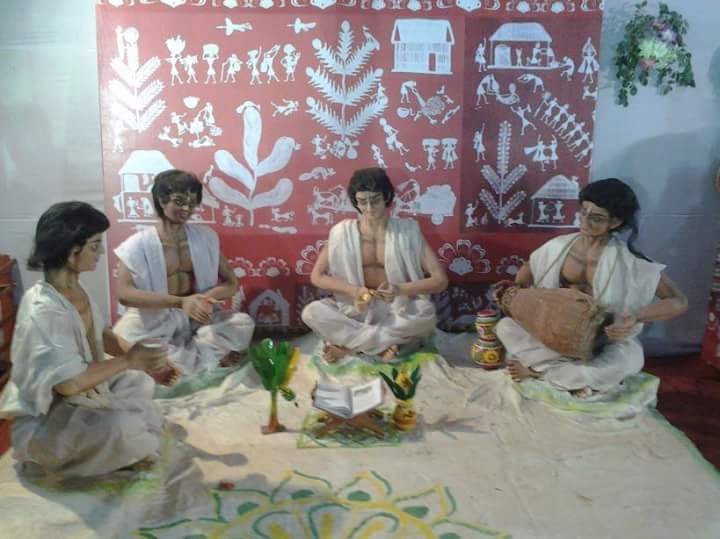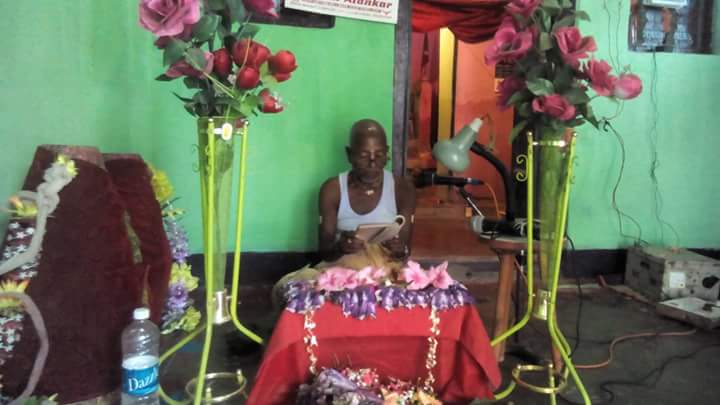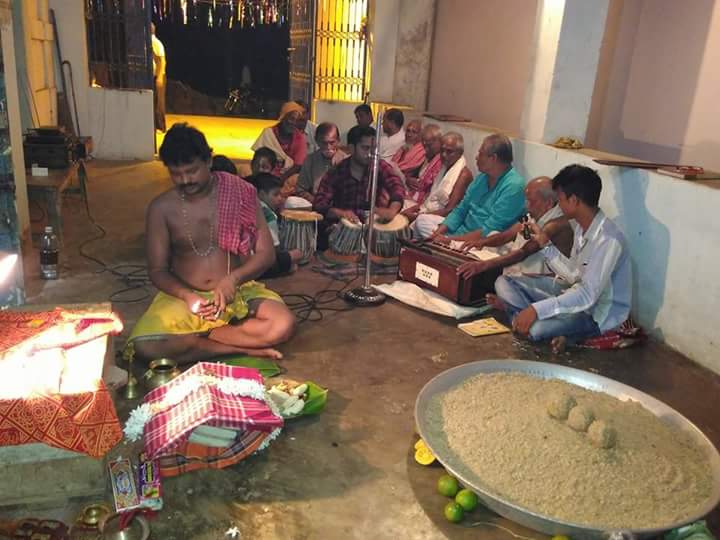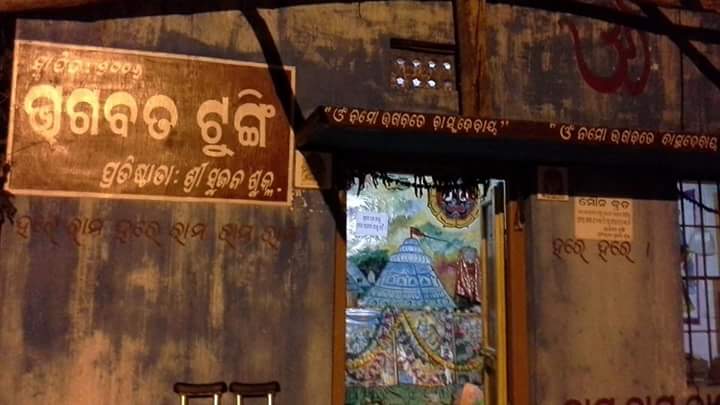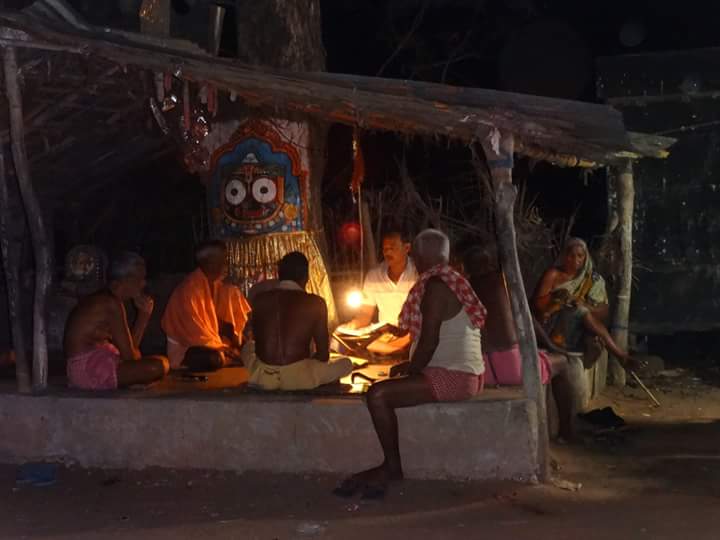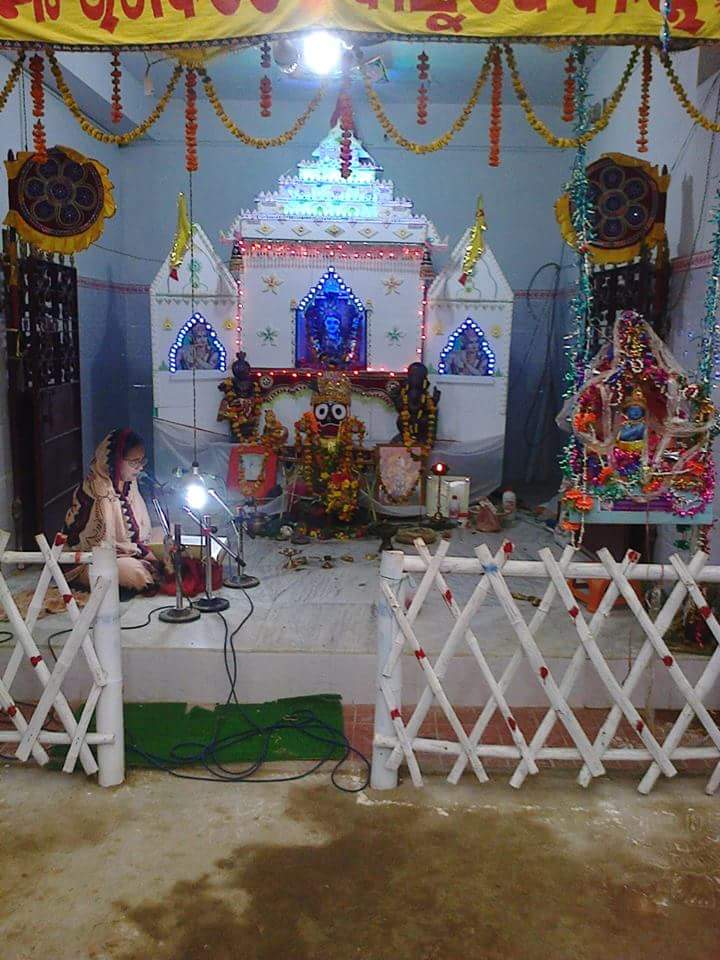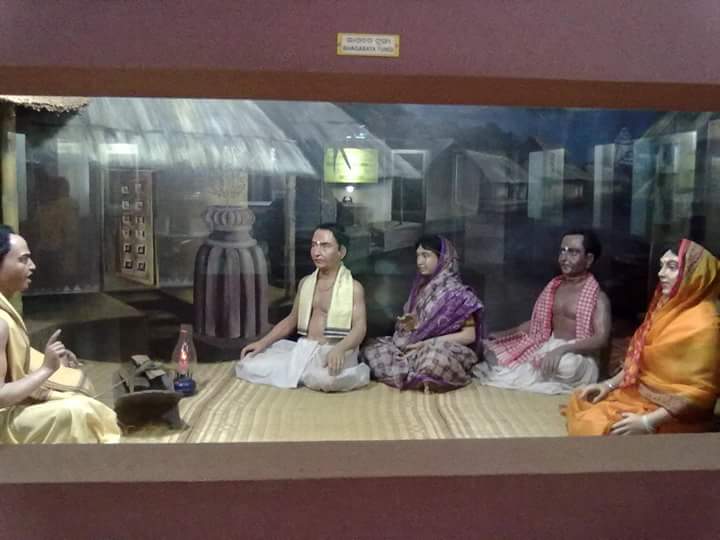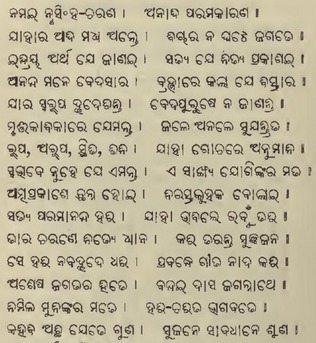SRIMAD BHAGABATA is not only an excellent creation in odia literature but has been a guiding light of socio cultural life for odia since its inception. The establishment of Bhagabata Tungi in all villages across odisha & regular recitation of the verses of Bhagabata has defined the life & living of odias over the centuries. Odia Bhagabata Tungi is an inseparable part of Odia culture. Present in every village and cared for by our ancestors, it played a major role in maintaining social discipline and character building of our people.
On the occasion of 500th years of completion of our rich cultural epic ie ”The Odia Bhagabata” & it’s exponent Atibadi Jagannath Das; I wish with folded hand that the culture of Bhagabata Tungi to be the guided force for all of us to achieve Mokshya / Nirvana. ‘Atibadi’ Jagannatha Das needs no introduction to any Odia, as his consummate work ‘Bhagabata’ is daily read almost in every household of Odisha. In the history of Odia literature and culture the name of Jagannath Das has been immortalized as a leading devotee. His unique creation ‘Srimad Bhagabata’ is a pioneering piece of Odia literature.
I salute your foot. You are the root cause of creation. Nobody is able to know your origin and your end. Oh Paramanada Hari! (Absolute happiness) you if conceived in the mind one can cross this world ocean. You are the truth. Only the absolute truth.
Bhagabat is not only a mythology it is a concept known as ‘Bhagabata Dharma’. The essence of Bhagabata Dharma’ in the language of Atibadi Jagannath Das is:
‘Krushna Arpita Jete Karma
Se Ate Bhagabata Dharma’
All the Karmas performed by Jeeva if offered to Lord Krishna is called ‘Bhagabata Dharma’. Krushna is the nucleus and Jeeva is atom, only a spark of the light house.
Dash wrote Odia Bhagabata. It had a great influence in the standardizing of the Odia language. Its popularity in Odisha reached to the level of itbeing worshiped in many Odishan homes. The villages in Odisha used to have a small house or room known as bhagabata tungi, where villagers would gather to listen to recitations of Dash’s Bhagabata. Many of its verses have become proverbs and are cited by people throughout Odisha. The work includes 12 volumes and each volume has 10-30 chapters. Each chapter has 50 to 300 stanzas. Jagananatha Das translated the Odia Bhagabata into English.
The Shrimad Bhagabata is one the most sacred Hindu text composed by Maharshi Byasadeba. It embodies the essence of the Hindu-way of life. Several millenniums after it was written, the wisdom and enlightenment contained in its pages remain as relevant today as they were ever before. It is believed that the man who recites, the man who listens to and the man who asks questions on Bhagabata – all attain salvation by the grace of the Lord. Atibadi Jagannath Das, a great saint and a friend of Sri Chaitanya, translated the Bhagabata into odiya. The Odiya Bhagabata, however is more than a mere translation of the original text in Sanskrit. It contains the observations and elaborations of Jagannth Das which make it a rare religious text which is easily understood by even a common man.
The recitation of Bhagabata starts on Bhagabata Janma Day ( full moon day of Bhadrab) and ends a day before the next Bhagabata Janma, making it a year-long cycle, In almost every village of Odisha, Bhagabata parayana and prabachana are organised on special religious occasion to familiarise the common people with the teaching of the Lord. Recitation of Bhagabat is a regular occurrence during times of natural calamities like foods, droughts and cyclones in Odisha . Even now, it is read out to a person on his death-bed in most Odia Homes – the underlying belief being that recitation of Bhagabata would encourage the person to chant the name of the phenomenon of Bhagabata recitation in Odisha is that it never ‘ends’, it only increases . It signifies the eternal nature of the ancient religious text and emphasises it continuing relevance in day-to-day life.
Most villages had their BHAGABATA GHARA which were known as BHAGABATA TUNGI where Villagers old young & illiterates gathers to read , learn, discuss & find the meaning of their lives from the BHAGABATA. BHGABATA GHARA was in fact the cultural centre of the villages which looked after health, both of body & mind of the people. It is a pity that this revered institutions is dying out.which grew up to promote the value systems which refined & ennobled individual lives & sustained collective ethos in the society.
The Bhagabata is read and listened to is an integral part of village life in Odisha even to this day. Bhagabat Tungi’s (places where villagers converged in the evenings to discuss on religious issues or listen from the sacred Bhagabata and other texts) were ubiquitous in Odisha. Now Bhagabata Tungies have become rare.
Today this tradition is under the threat of destruction. If we forget our roots we will lose our ground and identity one day.This has now become all the more important for all Odias to come together to protect, promote & propagate the odia literature at this digital age while the next generation odias are moving away from their mother tongue.

